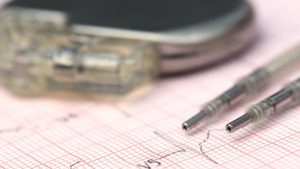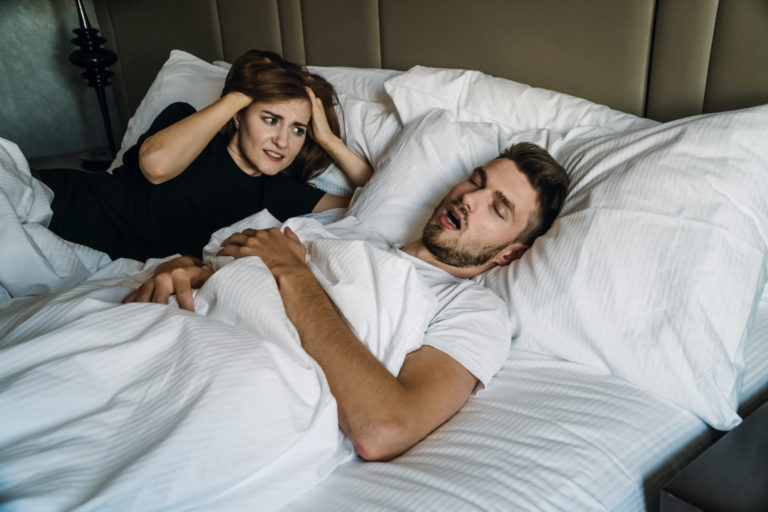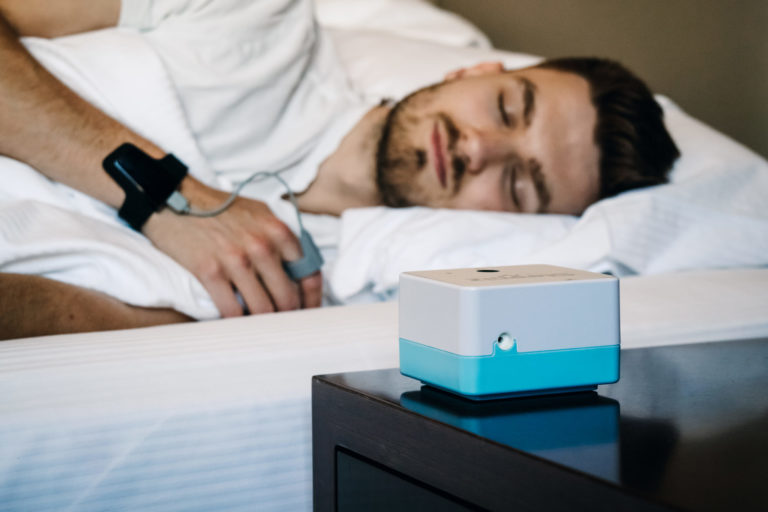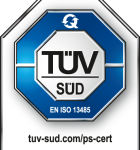CPAP is the number one therapy device recommended when sleep apnea is diagnosed. But what if this treatment method has already been tried and did not bring success? In this case, the tongue pacemaker is a possible and promising alternative to the CPAP breathing mask.
In this article, you will learn more about the topic. First of all, we will explain what sleep apnea is and why it is so important to have therapy. Then you will get information about how the tongue pacemaker works, and the course of such an operation. We will also clarify the question on costs for such therapy.
For which disease is a tongue pacemaker used?
A tongue pacemaker is most frequently used for so-called Obstructive Sleep Apnea (OSA). In our experience, it is considered one of the most effective treatments for this disease, along with the CPAP mask. It is usually recommended to patients only when other standard therapy, such as the aforementioned treatment with the CPAP breathing mask, cannot be carried out for various reasons or has not brought any improvement.
What is sleep apnea?
Sleep apnea is the name of a widespread common disease in which the airways repeatedly close for a period of time at night. This leads to multiple breathing stops of at least ten seconds per sequence.
Our brain control center triggers a kind of alarm system at each stoppage, causing our body to wake up briefly so that we can breathe again. We don’t notice these waking phases at night, but during the day we often feel excessively stressed, irritable, and permanently tired for no apparent reason. The obstructive sleep apnea just described is the most commonly diagnosed form.
What causes apnea disease?
Sleep apnea is a complex disease, and research into the factors that cause it is still ongoing. However, some triggers are already known, and what is both frightening and interesting is that we seem to have some of them under our own control. For example, many people who suffer from sleep apnea lead unhealthy lifestyles: High nicotine or alcohol consumption, unhealthy diet, and resulting obesity or type 2 diabetes are at the top of the list.
Uncaused factors that may be responsible for the development of OSA include anatomical conditions such as an enlarged tongue or jaw deformities. Age also appears to be an important consideration, as most sufferers are over 40 and 60 years of age, respectively. However, this does not exclude the possibility that sleep apnea has even been diagnosed in children and adolescents.
Why should OSA be treated?
If left untreated, sleep apnea can lead to various risks and that can even lead to serious secondary diseases. These include,
- Sleep-related anxiety disorder
- Depression
- Heart disease and heart attack
- Hypertension
- Stroke
Sleep apnea is not curable. But the good news is that if diagnosed at an early stage, there are various treatment methods that can get the disease completely under control and allow the patient to lead a normal and carefree life again. One of these is the tongue pacemaker.
Tongue pacemaker – how it works
A tongue pacemaker is a respiratory stimulation device. It has approximately the size and appearance of a pacemaker. It consists of three primary parts
- Respiratory sensor
- Stimulation electrode/cuff
- Generator
Before going to bed, you simply switch on the tongue pacemaker yourself using a remote control and switch it off again in the morning.
After a short, deliberate delay of about half an hour, it is active and stimulates your chin-tongue muscle continuously throughout the night. This achieves synchrony between the chin-tongue muscle and your breathing and effectively prevents breathing pauses.
Small surgery with lasting benefits
The tongue pacemaker is implanted into the body via a routine mini-surgery. The Helios Clinic describes the surgical procedure very well: during the procedure, a cuff is placed around a specific part of the chin-tongue nerve, and the pacemaker is inserted near the chest. The cuffs and pacemaker are connected by a cable that is gently placed under the skin.
The healing period after surgery usually lasts about four weeks. Only then the generator must be turned on for the first time. Follow-up appointments with your doctor are important to keep.
What does a tongue pacemaker cost and is it covered by health insurance?
The treatment costs with the tongue pacemaker amount to about 20,000 euros. If you meet the requirements, it is possible that your health insurance will cover the costs in full.
This is generally the case if you have already tried all other standard therapy methods, but was unsuccessful. The standard therapy methods include, for example, CPAP therapy or the mandibular splint. The conditions are such because this is still a comparatively new therapy for OSA and chronic fatigue respectively.
If you also meet the health requirements to be able to have the tongue pacemaker therapy performed (for example, no enlarged tonsils), it is best to inquire with your health insurance company whether it has different conditions to the acceptance criteria we have researched. Some special clinics, such as the [Kantonspital Baselland, die] (https://www.ksbl.ch/hno-leistungen/schlafmedizin/Zungenschrittmacher-schlafapnoe/fragen-antworten#:~:text=Wie%20lange%20h%C3%A4lt%20die%20Batterie%20des%20Zungenschrittmachers%3F%20Die,Batterie%20leer%20ist%2C%20muss%20der%20Generator%20ausgetauscht%20werden.)) perform the procedure, also handle the settlement with the health insurance company themselves.
Is the tongue pacemaker dangerous?
The tongue pacemaker is a device that has been researched for many years and at no time poses a direct health risk. The electrical stimulation is so low that those affected are basically unaware of it. If you always fall asleep very late, you may feel a tickling sensation on your tongue.
As with a pacemaker, there are some safety precautions to take, which your doctor will explain to you in detail before the operation. These include:
- Keep the minimum distance to electrical devices with magnetic fields without exception.
- MRI examinations may be possible only with restrictions or not at all. Always inform your doctor about your tongue pacemaker.
- Certain sports should no longer be practiced with a tongue pacemaker. This includes diving, for example.
How long does a tongue pacemaker last?
The average shelf life of batteries is 8 to 11 years. However, your doctor will let you know about it in one of your follow-up appointments when it is time. For the battery replacement, you will have to go back to the operating table for a short time. Here, the procedure is again comparable to that of a pacemaker.
How can I find out if I am affected by sleep apnea?
If you suspect that you have OSA because you are tired all the time, the first step is to be diagnosed. For this, you must undergo a sleep test in which various parameters such as your breathing stops and your pulse are measured over several days. From the results of this test, your doctor can determine how likely you are to have apnea or whether your sleep disorders may have other causes.
There are two different options for such a test.
Testing in a medical sleep laboratory
Your family doctor can refer you to an external sleep laboratory. As a rule, you will spend three nights there and your results will then be evaluated by the laboratory. In principle, this is a good option, but it has two drawbacks: It’s not uncommon for you to still be wired up for measurement in such labs, much like in a hospital. In addition, the average waiting time for an appointment is often 6-9 months.
Analysis at home
The alternative to an external sleep lab is called Sleepiz. Sleepiz is a kind of mobile sleep lab: a small, medical device that is delivered to your home. Of course, the device is officially recognized and many doctors are already working with it enthusiastically. The device is easy and simple:
- You place the Sleepiz device next to your bed for three days before bedtime, turn it on, and it measures the most important values you need for a reliable diagnosis of OSA completely contactless at night.
- Your data is transferred to a secure cloud, and a selected expert gets access and analyzes it.
- You receive the analysis results as a PDF file by e-mail. You then take the report to your doctor and discuss the next steps.
- If you wish, you can also book a detailed analysis session with the Sleepiz experts and even take part in a 20-minute sleep coaching session.

With this procedure, the waiting time is only about 2-3 days until you have your device is delivered to you, unlike the sleep laboratory. The special thing is that you don’t have to buy the device, but can simply rent it.
Where can I order Sleepiz?
Your Sleepiz device is just a click away. If you are not satisfied with the result, Sleepiz will refund your money within 30 days. The team is also happy to answer any questions you may have.




